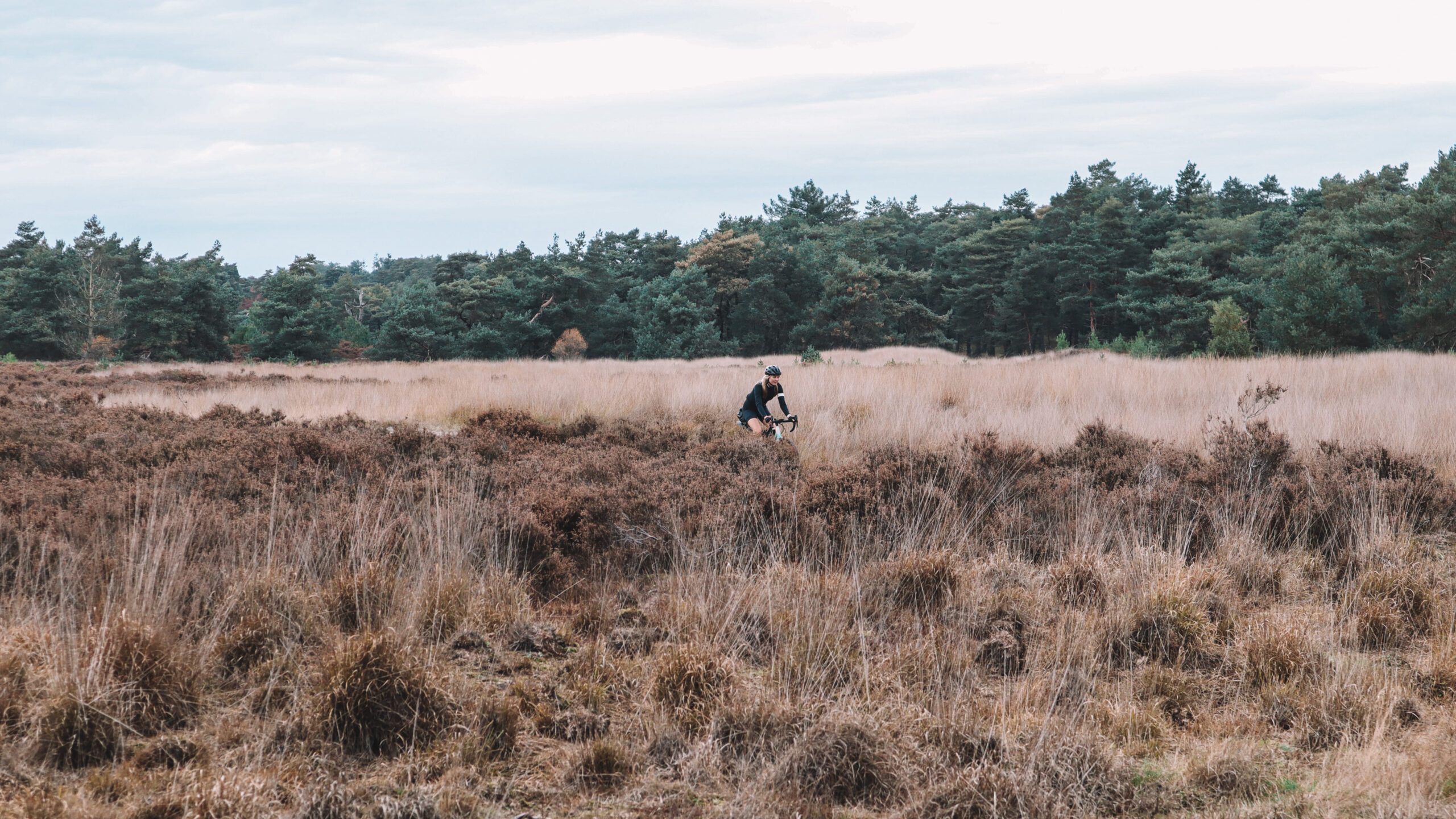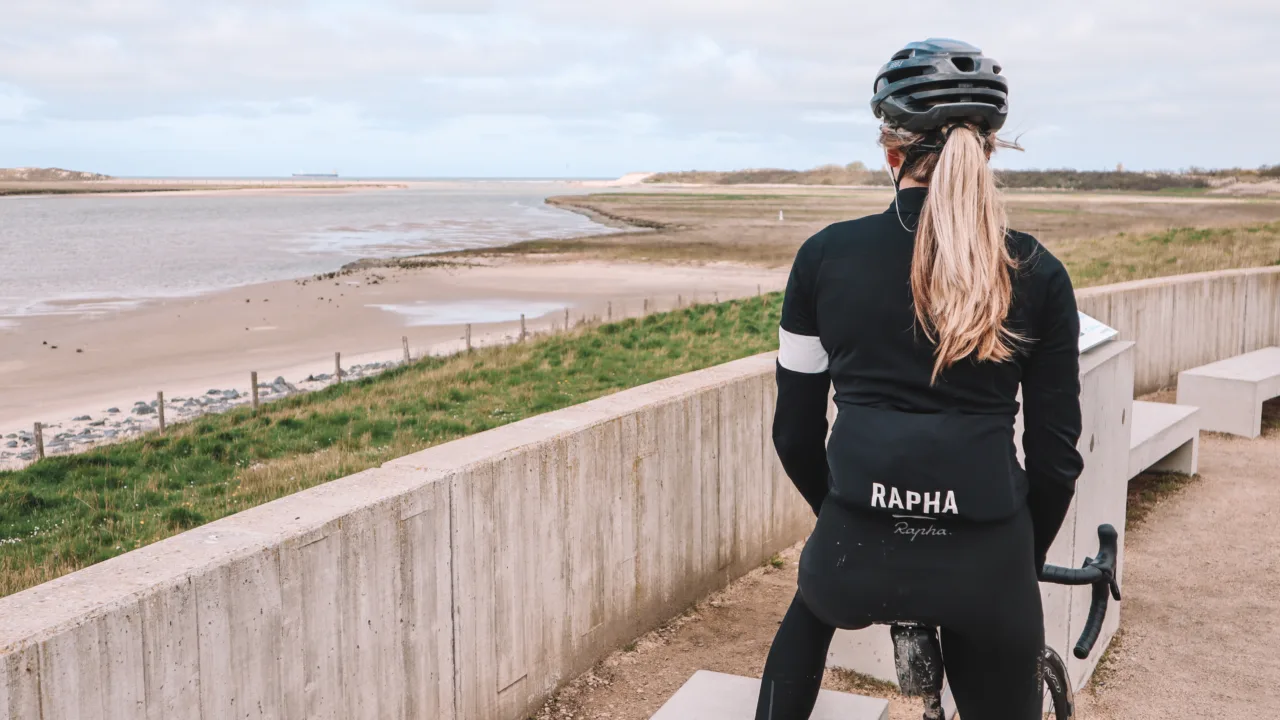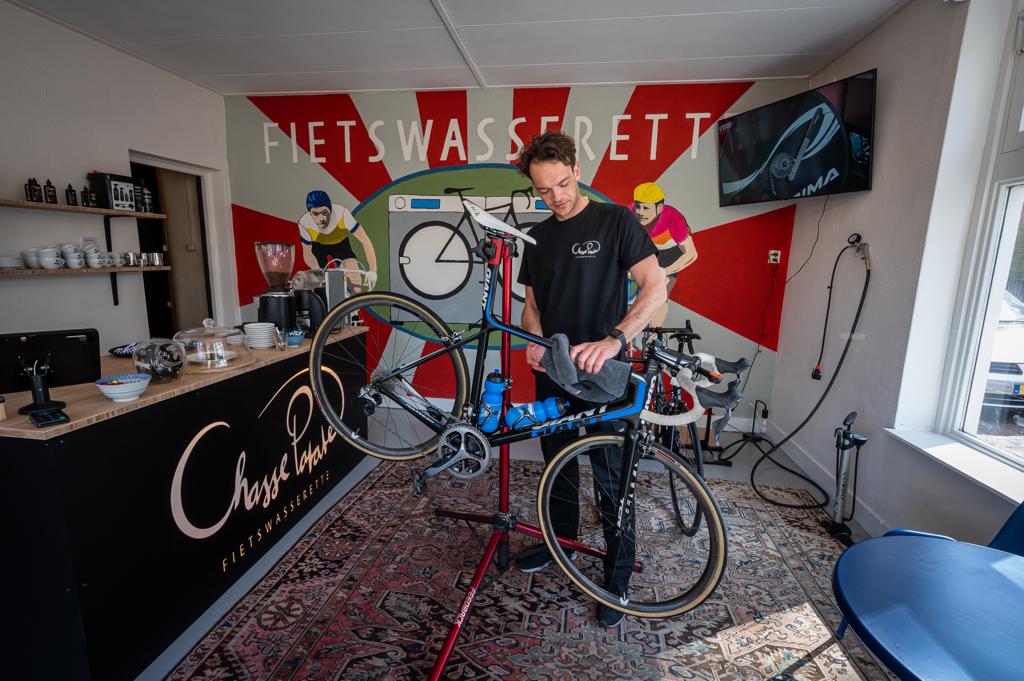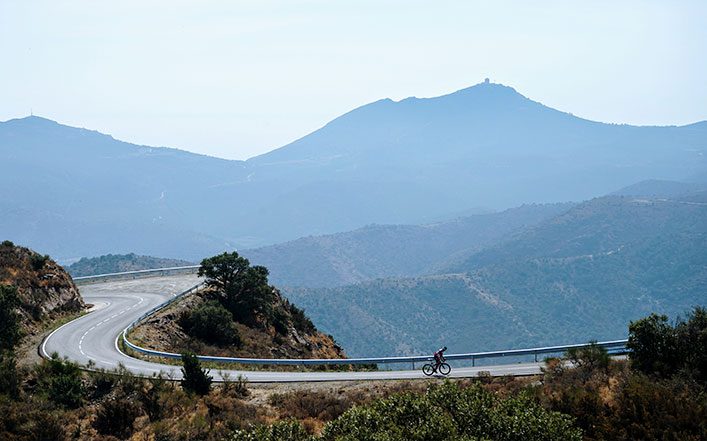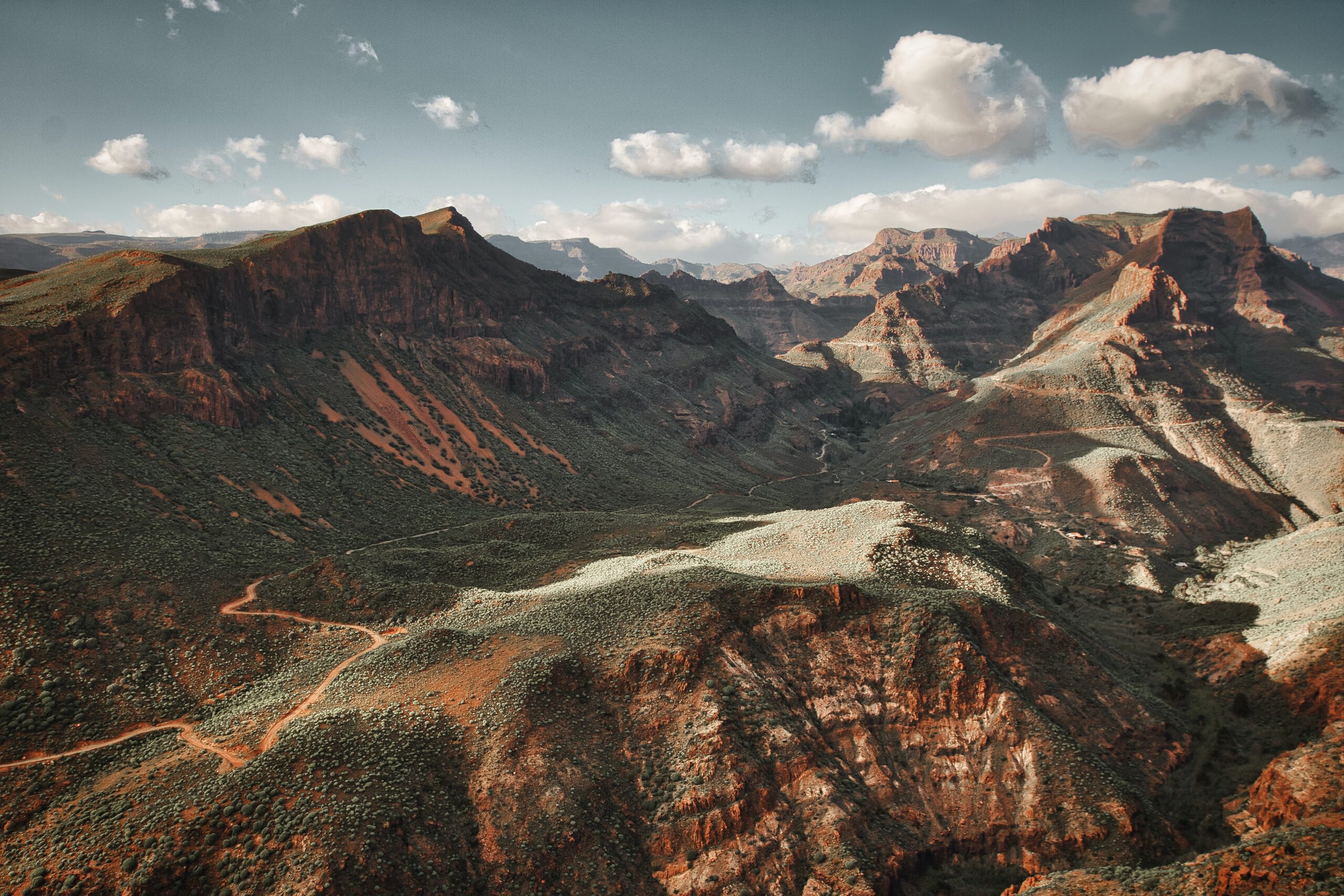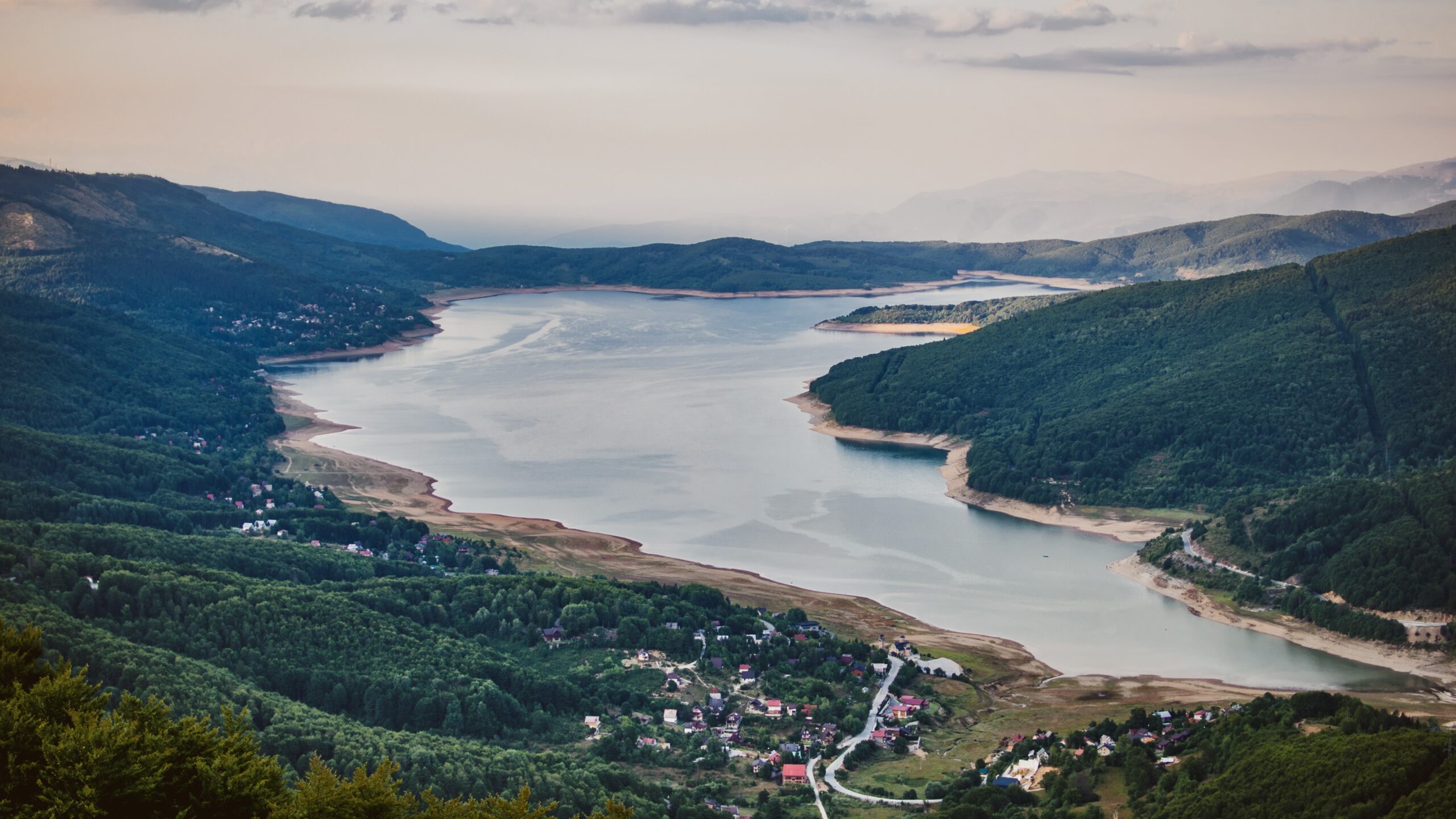From Porto to Foz do Arelho - pedalling through culture, salty sea air and history
Central Portugal's coast is no place for rushing. Here it's not about altimeters or segment records, but the rhythm of the sea, the smell of resin and the stories of the people who live there. In three days, we cycle from Porto to Foz do Arelho, accompanied by guide Ruben - always smiling, full of knowledge and love for his country. He knows every bend, every bridge and every story. Along the way, he points out details we would otherwise overlook: the smell of pines, the tracks of fishermen, the rhythm of the waves.
Find out more about Portugal here
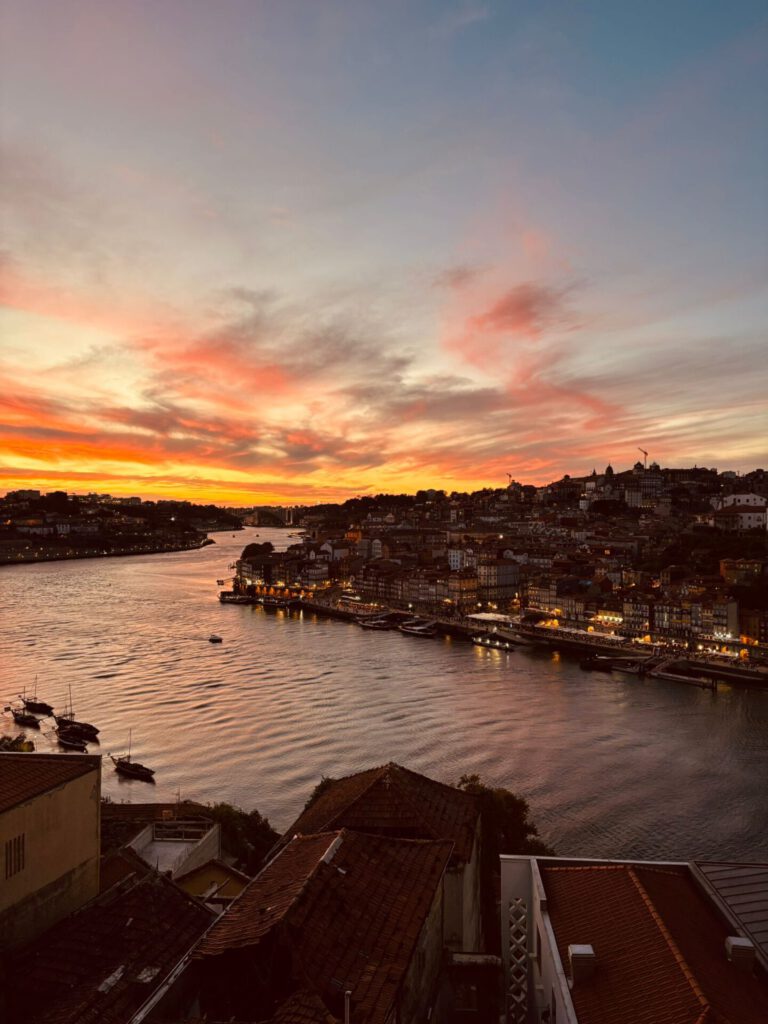
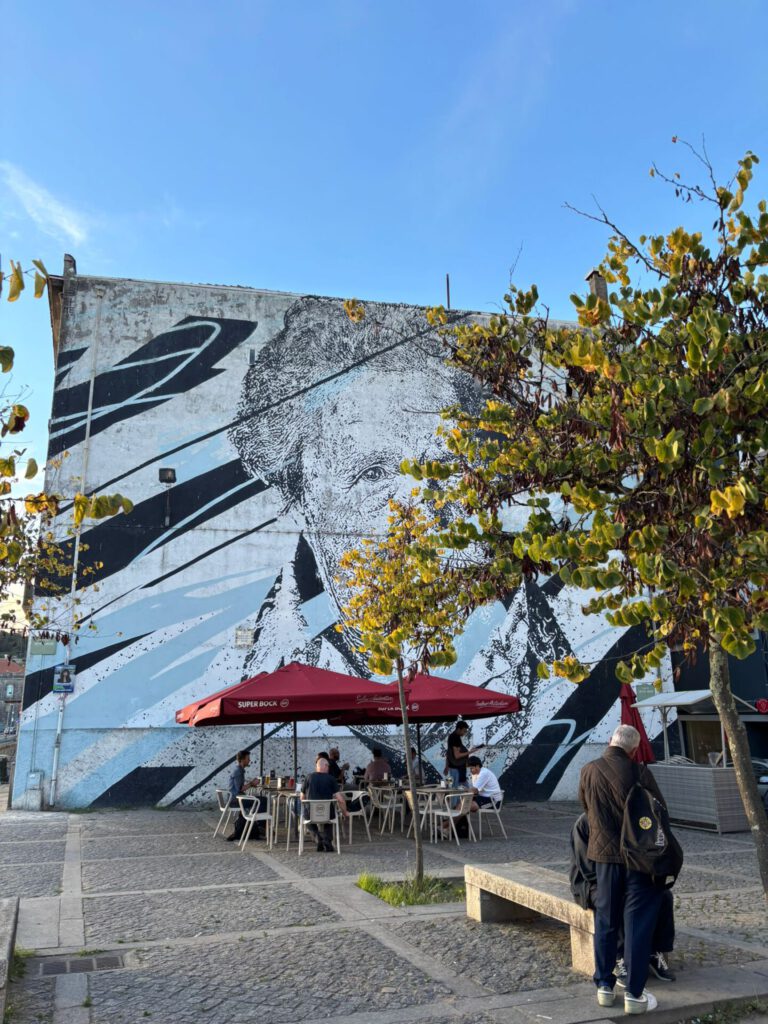
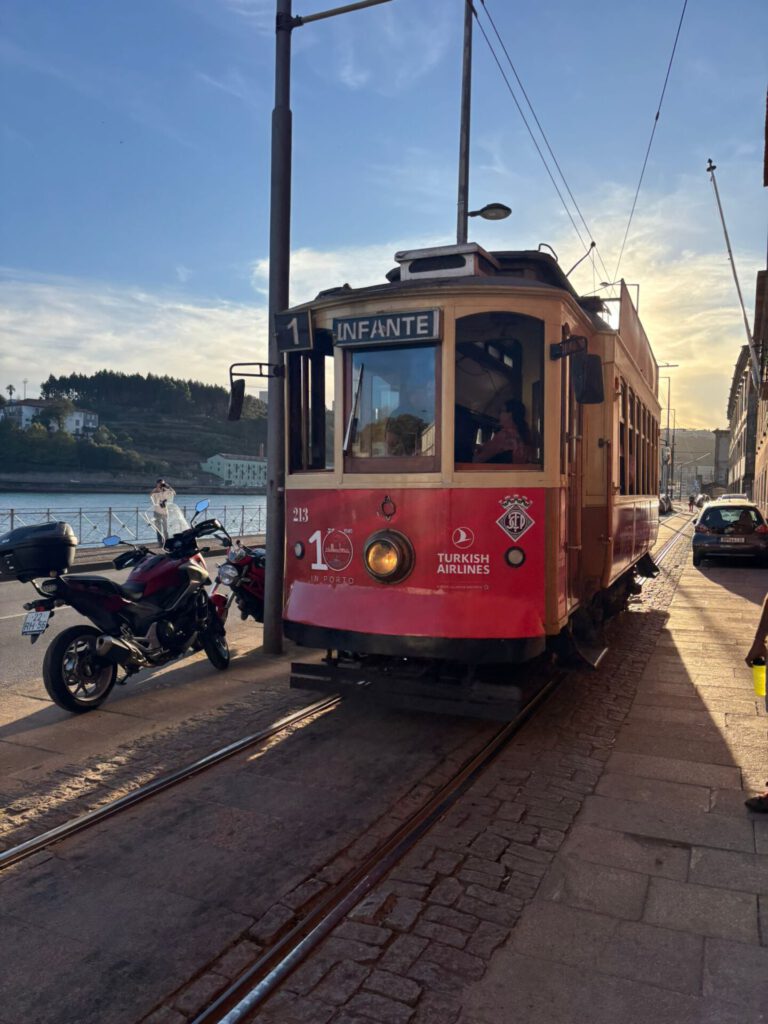
Day 1 - From azulejos to Arte Xávega
The journey begins in Porto, under the arches of the iron Ponte Luís I, where the Douro glistens in the morning sun. We drive through narrow paved streets, descending towards the river, feeling the vibration of the city's cobbled roads in our handlebars: 'They call this a Portuguese massage!' Ruben explains that the port wine sold here does not come from the city itself: the grapes grow in the Douro valley, the wine matures across the river - in Gaia. And the arched bridge we drive over? With this, Porto was once supposed to have honoured its king, but when Dom Luís failed to show up at the opening, the locals decided to remove the 'Dom' from the name. "Typical Porto," Ruben grins. "Proud, direct and a touch cocky."
Short stop
We stop briefly at the São Bento station, where thousands of blue tiles - azulejos - tell stories of battles and farmers' markets. Ruben points out two misplaced pieces. "They put 22,000 of them, by hand. A puzzle of porcelain." And a little later, at the edge of town, the ocean emerges at Miramar, where the Capela do Senhor da Pedra standing on a rock in the surf. "Every winter the waves pound over it," says Ruben. "And yet they build the chapel again and again. Because faith here is stronger than water. And for fishermen, it is important that they can call on their God close to the sea."
Wind
Along the coast, the wind blows briskly. We abandon the planned route and opt for a gravel variant along Aveiro's 65-kilometre-long lagoon and the Canal da Murtosa - dustier, but quieter. Between pine trees and sandy paths, it smells of sea and pine. This is where salt and sweet meet. In some places, moliceiros bob in the water. Little boats painted with saints, declarations of love and naughty scenes. Ruben laughs: "After the dictatorship, we were finally allowed to laugh again, even on a boat." In Costa Nova then we make our way. Here the striped houses - palheiros in red, blue, yellow - gleam in the sunlight. "These were once sheds for fishermen's nets," Ruben explains. "With the brightly coloured stripes, fishermen protected the walls from the salty sea. The colours come from leftover paint from painting boats."
We end in Praia de Mira, where the sea is not only admired but also tamed. Ruben talks about Arte Xávega, the traditional fishing where men used to row and now send tractors up the beach to haul in nets. "The fish were sold straight from the boats," he says, "straight from the sea to the pan." A ritual that smells of salt, petrol and history.
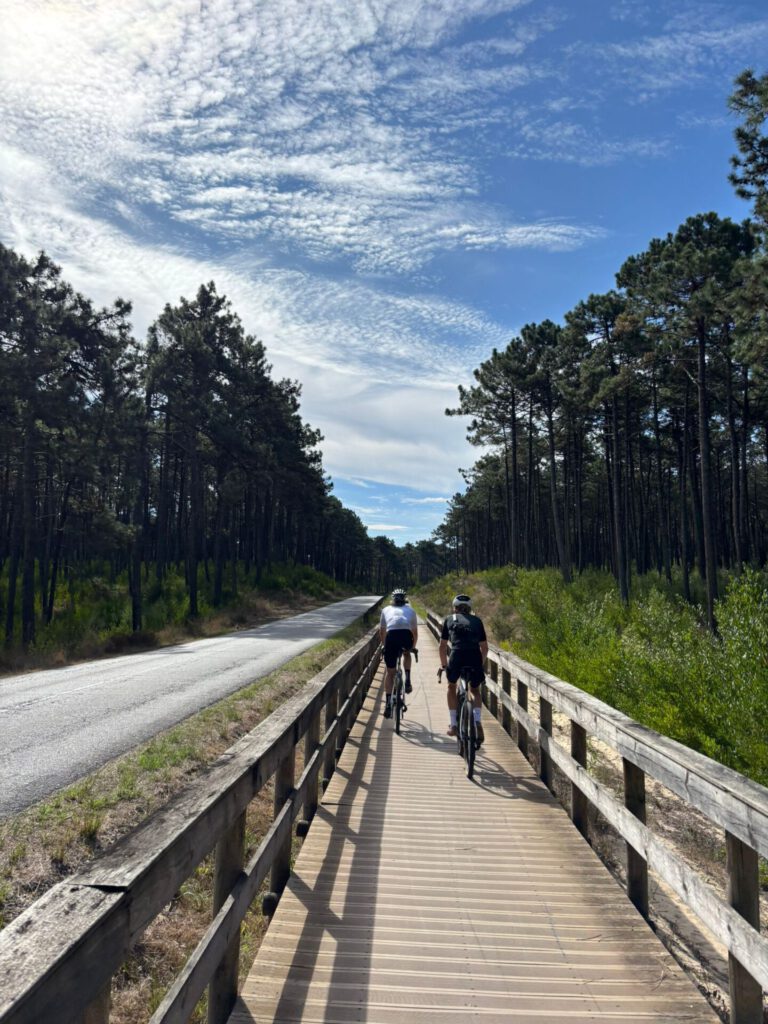
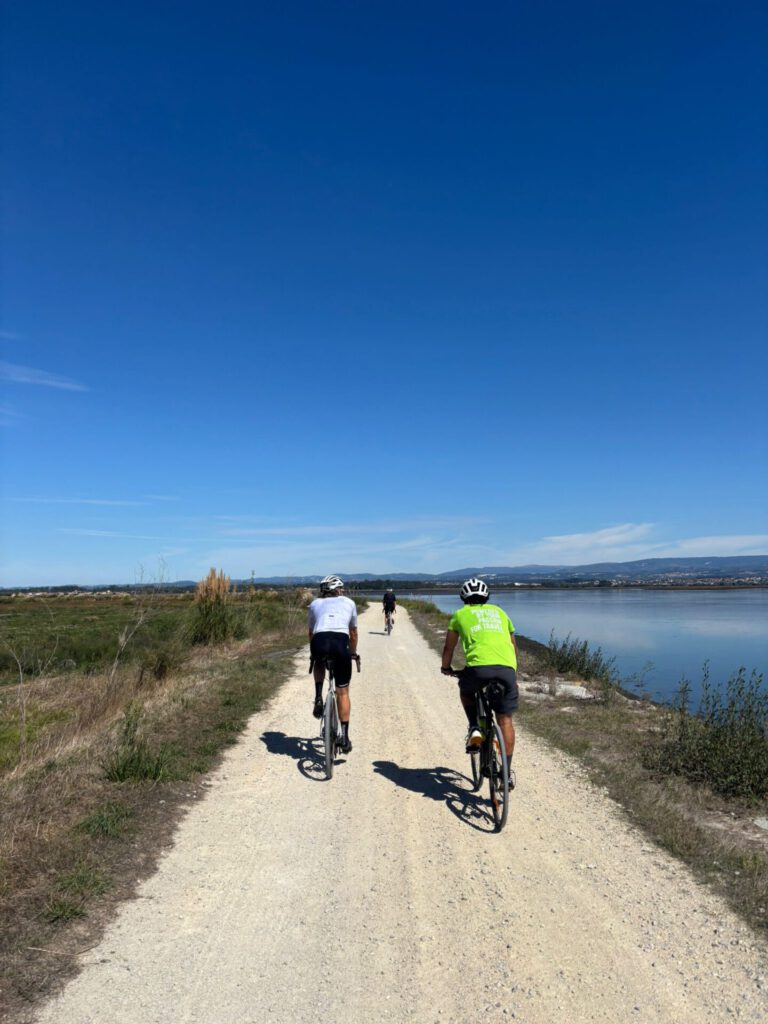
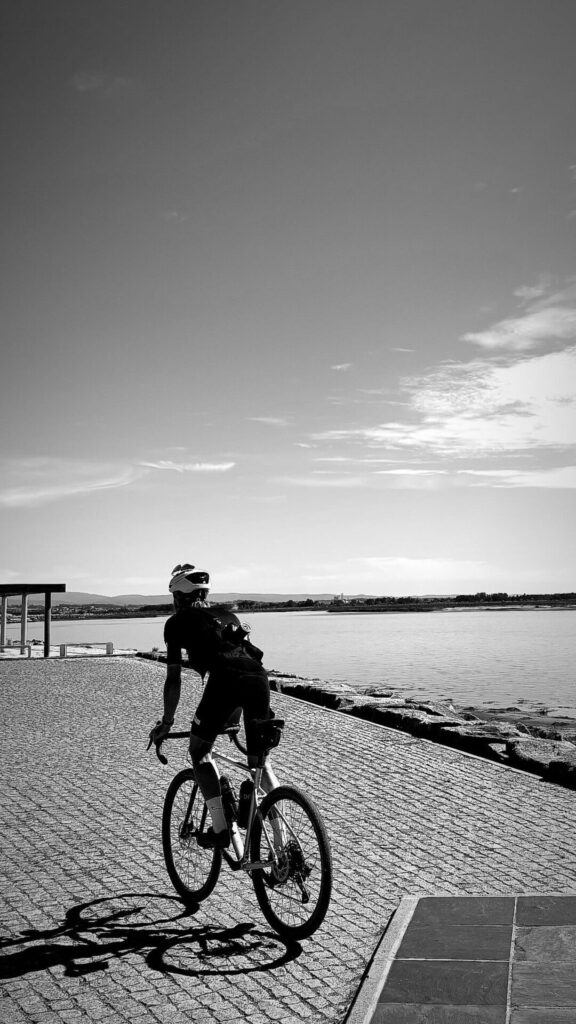
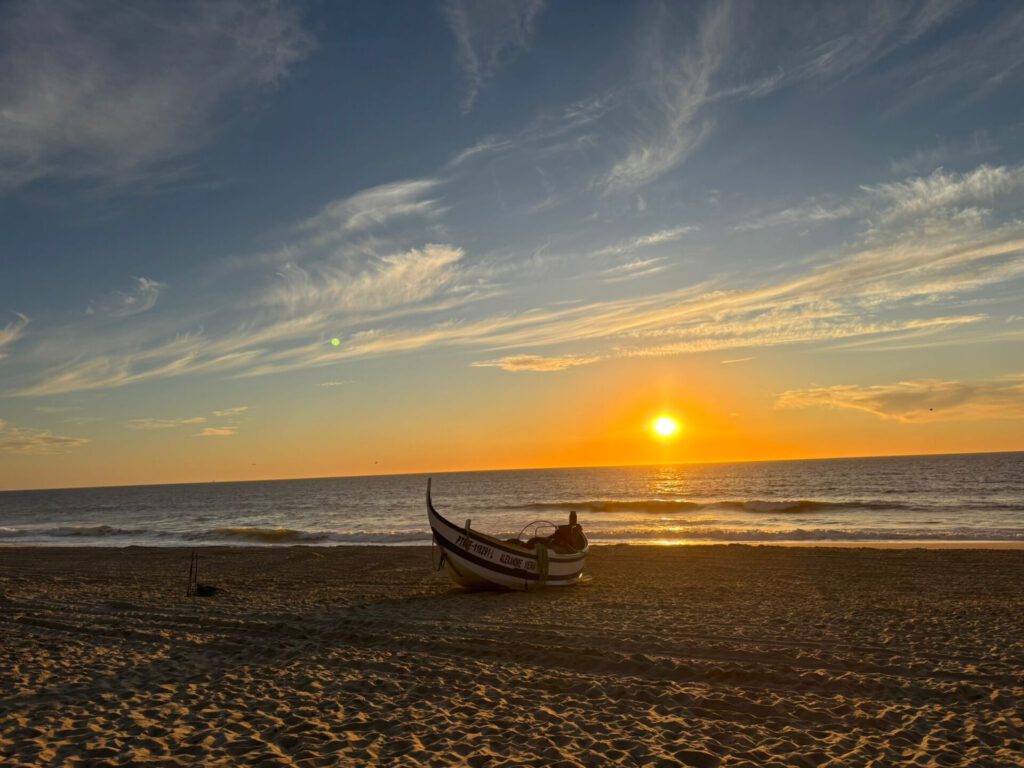
Day 2 - From forests to waves
The second day takes us further south, along a coast that feels at once wild and organised. The wind is brisk, the air full of resin. We drive through pine forests that were once planted by humans to protect the dunes and keep the inland from getting choked. "Without these trees," Ruben says, "the sea would gain a piece of land every year."
At Figueira da Foz he points to the row of lighthouses along the coast and the long piers that keep the estuary open. "We negotiate with the sea here," Ruben says. "Never won, never lost - but keep sailing." This is followed by quiet kilometres through small villages until the climbs to Nazaré begin.
Pilgrimage site
For centuries, this was a place of pilgrimage. Atop the cliff of Sítio Ruben tells the legend of Dom Fuas, the knight who, hunting in the fog, almost drove into the abyss. At the last moment, Our Lady of Nazaré appeared and saved him from falling. "That's why this chapel stands here," says Ruben, "exactly where his horse stopped just in time." In the village square, women at stalls still wear skirts with seven layers - a tribute to the seven waves of the ocean. Today, Nazaré is famous for surfers braving 30-metre waves, but the echo of faith still echoes in the surf.
We spend the night in Nazaré, where the evening air smells of salt and sun and the sun is slowly sinking behind the horizon. Fish is drying on wooden racks: peixe seco, mackerel and sardine, gleaming in the last light. "This is how they all used to do it," says Ruben. "Sun, salt and patience - that's all they needed."
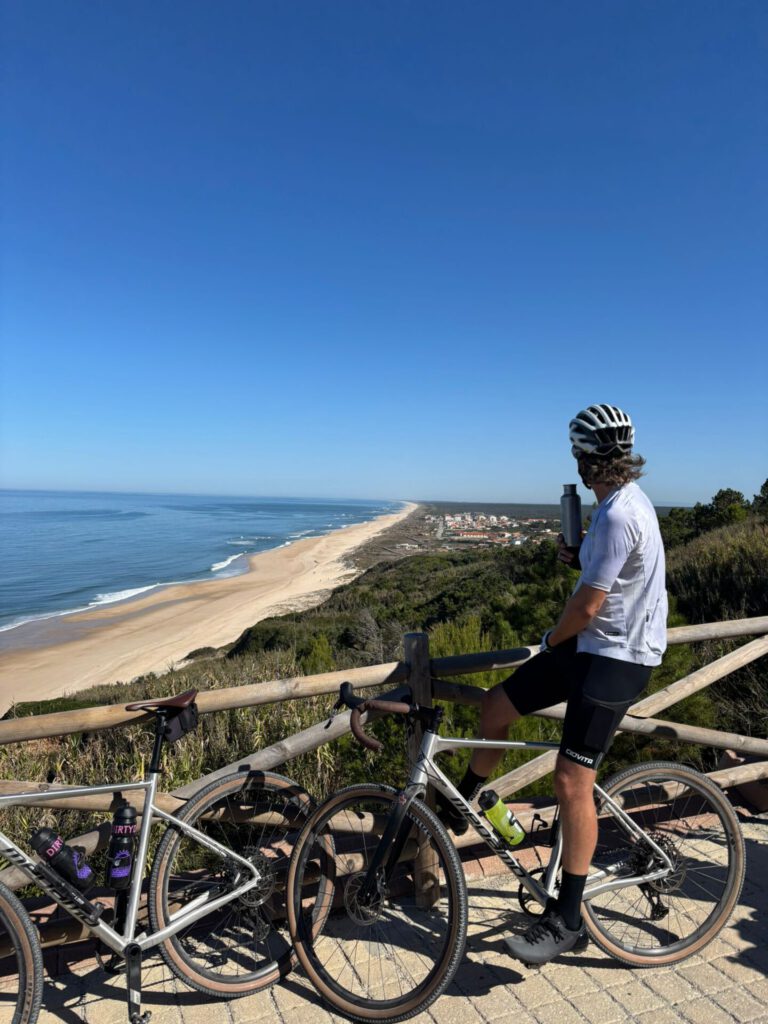
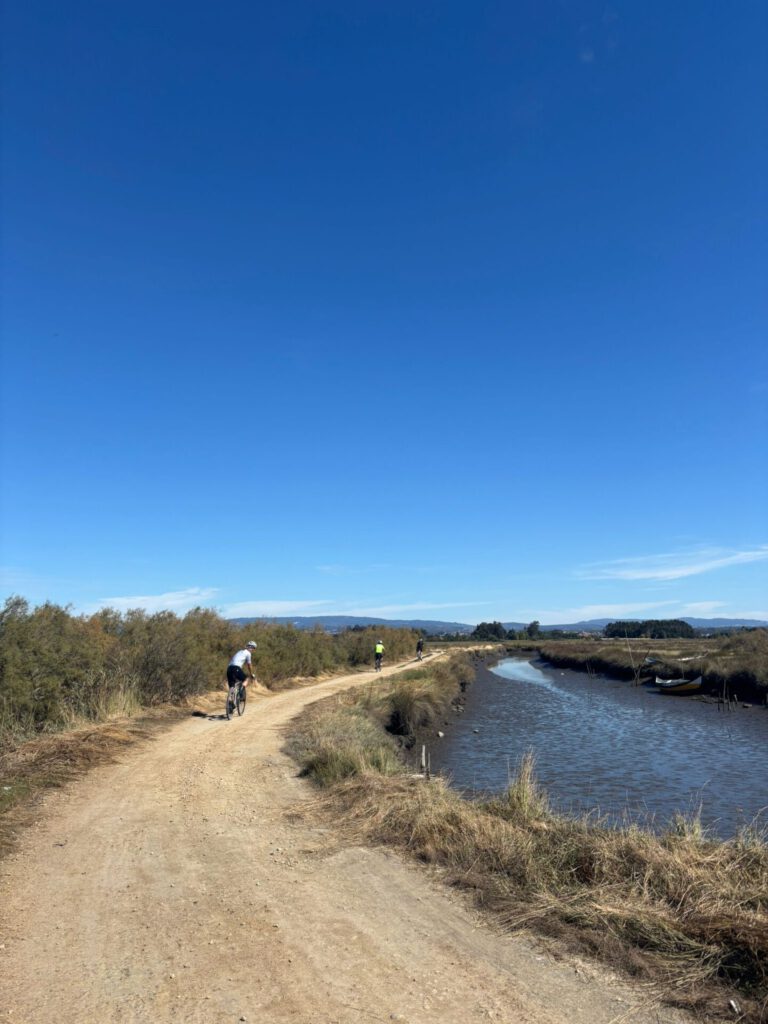
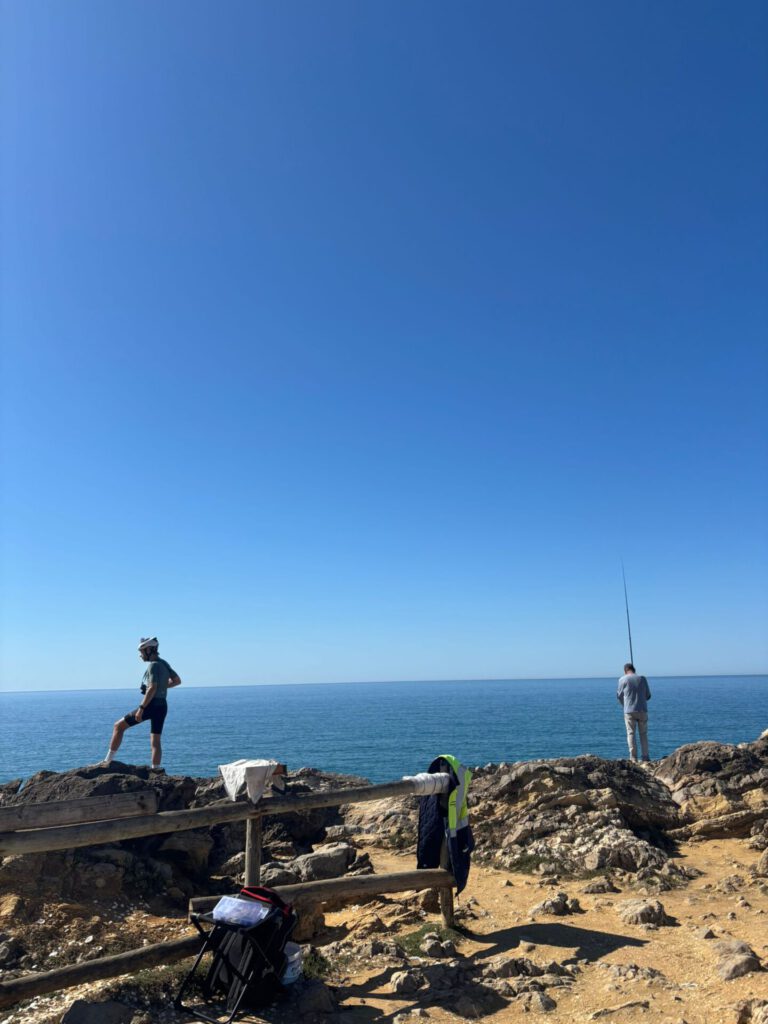
Day 3 - Gravel and shimmering lagoons
We set off early, the ocean still in our ears. The climb out of Nazaré chops it up, and soon after is a tough climb to Pescarias, where the legs burn but the view over the sea makes up for everything. Then we deviate from the main route and follow a gravel path through reddish-brown earth. It feels like riding through a painting - earth, sky, sea and silence. Ruben calls it "the real Portugal": rugged, simple, full of colour.
At São Martinho do Porto the road descends to a bay that sits like a shell in the shore. The shape is not accidental: Ruben explains that the ocean has shifted sand and rocks here for centuries to create a natural harbour. Shelter and open sea meet in one arch. We cycle through a natural passage in the rocks and admiringly watch the waves crashing against the shore.
The final stretch to Foz do Arelho leads over rolling roads. First the last stretch along the ocean, then right along Óbidos' lagoon. Boats gently bob along the shore, the wind drawing ridges on the water. We put the bikes down and watch as sweet and salty meet. A logical final destination after three days in which the bike was mostly a key - to landscape, people and stories.
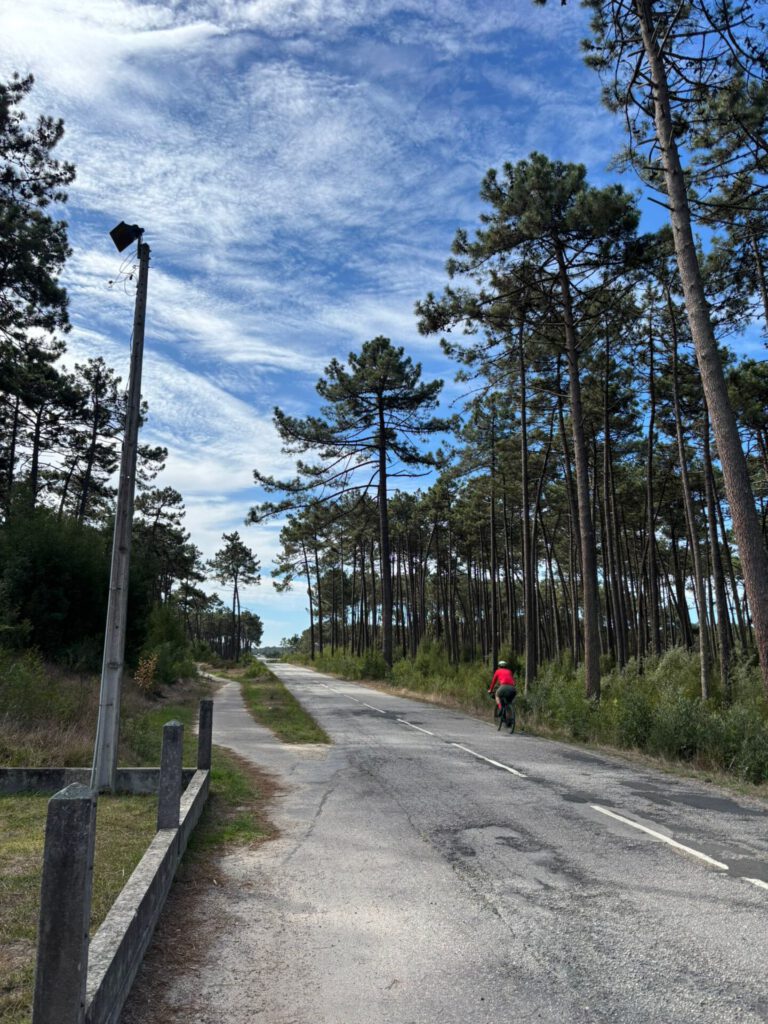
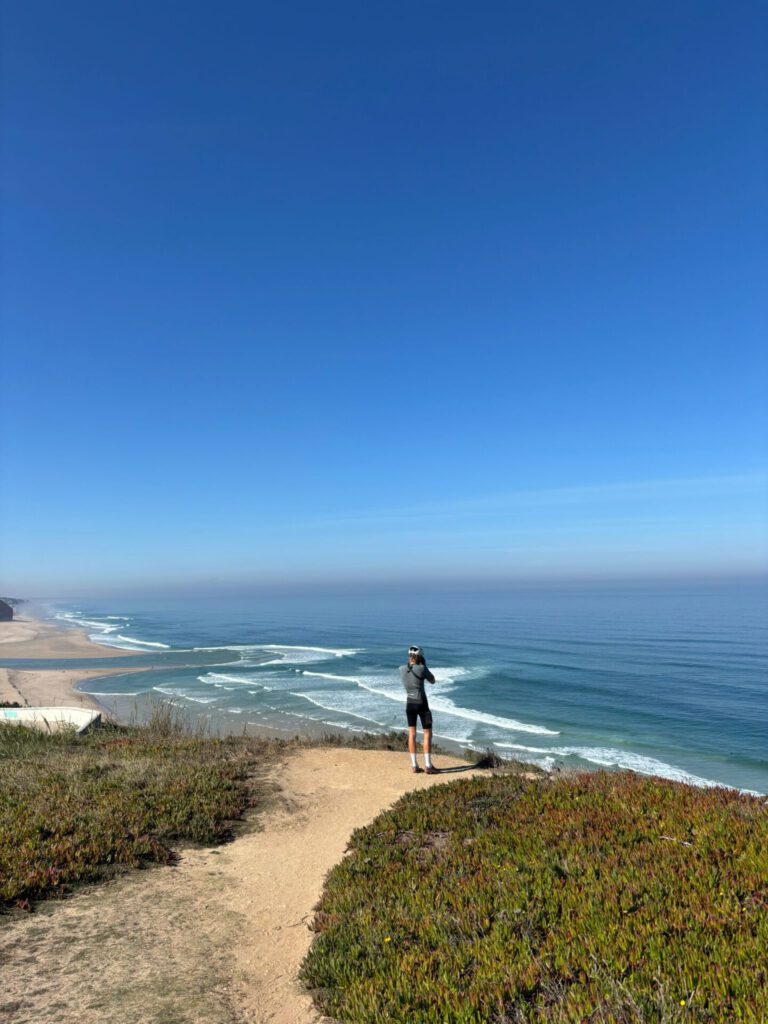
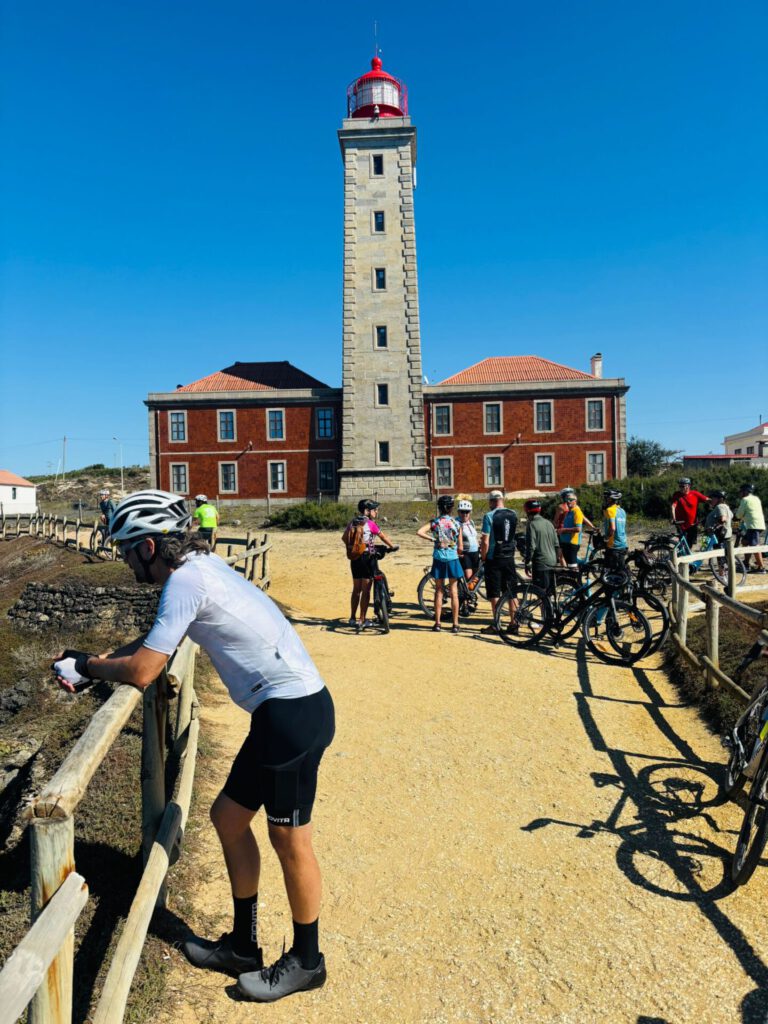
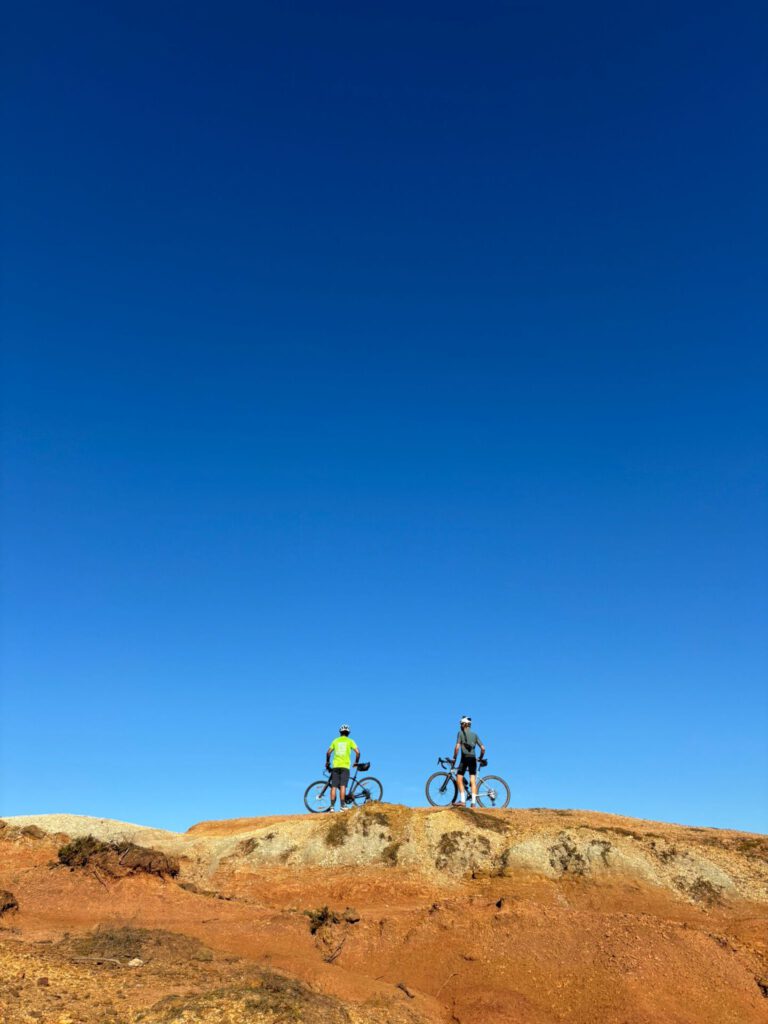
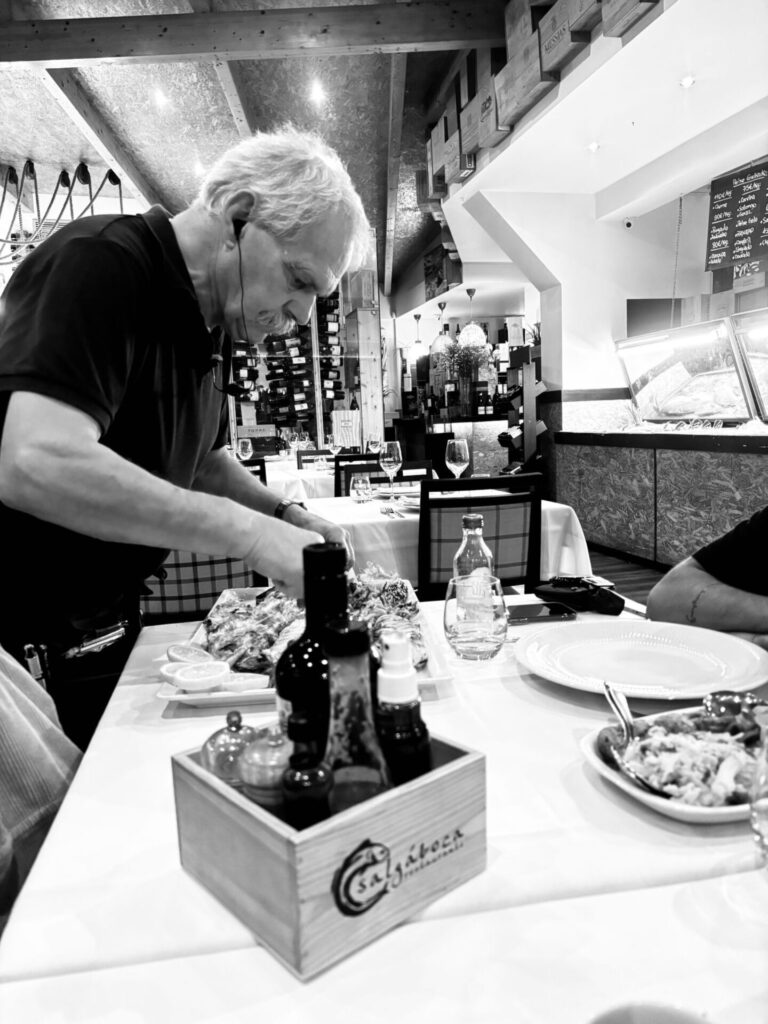
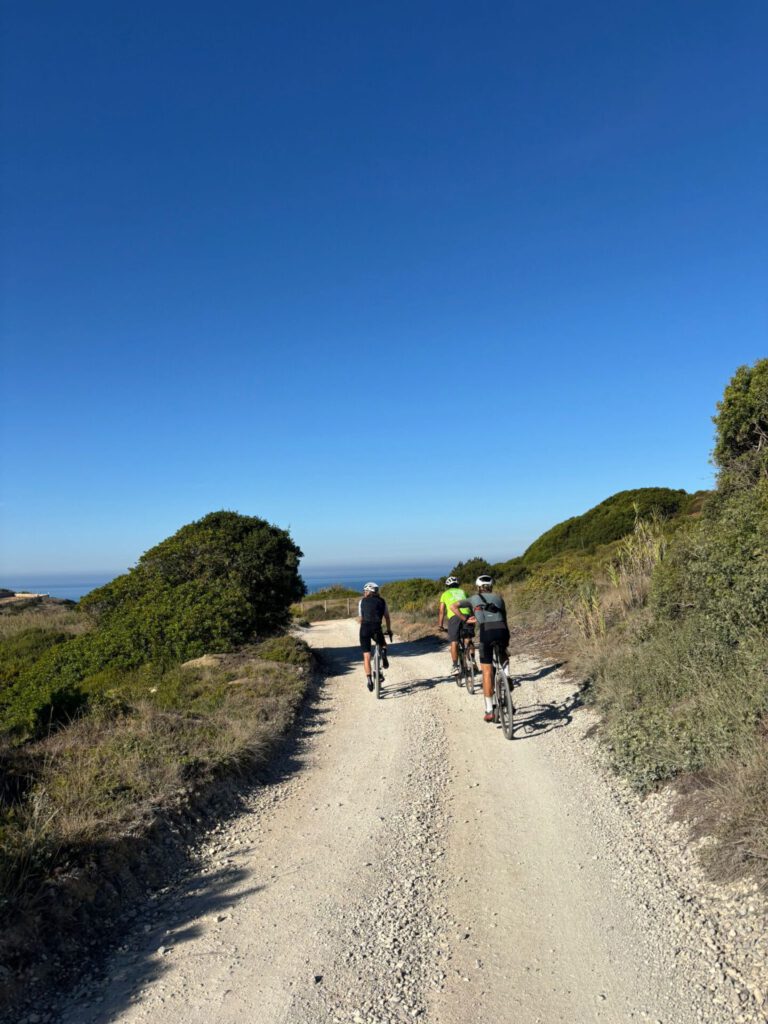
Food on the go - sea, sugar and tradition
Cycling along the coast without eating fish is almost impossible. Every port town has its own grill or marisqueira, where sardines and sea bass are served straight from the grill. In Praia de Mira we will join Salgaboca Restaurant, an atmospheric seafood restaurant by the sea where all fish is caught with a fishing rod. The smell of charcoal and lemon hangs in the air. The waiter with his impressive moustache first shows the fresh fish to the table, before carefully removing the bones for us after grilling. Outside, you can hear the waves breaking while the plates are still steaming. The fish here is so fresh it still smells of salt; simplicity is the secret of Portuguese cuisine. A plate of grilled dourada, some lemon and a glass of Vinho Verde - that's all the day needs.
Sweets can be found in every bakery, but the most famous temptation remains the pastel de nata: warm, crispy and filled with soft custard. Ruben explains that this love of eggs and sugar comes from monasteries. Centuries ago, monks and nuns used egg whites to paint walls or stiffen clothes; from the leftover yolks they made desserts. That's why Portuguese delicacies taste like sunshine, sugar and history.
Lock - The bicycle as the key to Portugal
Portugal's Atlantic coast does not require speed, but attention. We ride here not to perform, but to watch. To hear how the sea breathes, to feel how the sand shifts, to listen to the stories of a guide who knows the land like his own hand.
Ruben calls Portugal an open-air museum - from forests holding dunes to villages living off the sea. And he is right. Cycling along this coast, we discover a land as hard as it is soft, shaped by wind, water and will. Portugal is art, says the tourism agency's campaign. But those who cycle along the coast discover: Portugal ís also rhythm. And breath. And the smell of resin and sea.
Practical
Best travel time for this region is: April - June or September - November.
In the summer months, it can get too hot along the coast to cycle comfortably.
The stages are manageable: 50-65 km per day, 200-500 altimeters.
Central Portugal routes
For those who want to cycle along the Atlantic coast of central Portugal themselves, below you will find both the original route plan and the stages we actually rode, including some gravel sections and detours that show off the landscape even better.
Original route planning:
- Route 1: Porto → Praia de Mira
- Route 2: Praia de Mira → São Pedro de Moel
- Route 3: São Pedro de Moel → Foz do Arelho
Routes driven by us:
Day 1:
Day 2:
Day 3:
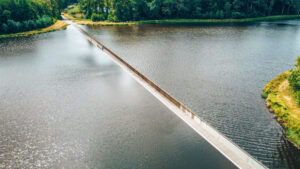 Belgium, Limburg, Stories
Belgium, Limburg, Stories Biking in Belgian Limburg: Landal Park Eksel as a sustainable base
4 December 2025 | Author: Sander
In recent years, the Belgian Limburg region has emphatically profiled itself as a cycling region. Not only by attracting several championships to itself (including European cycling championships), but also by having a
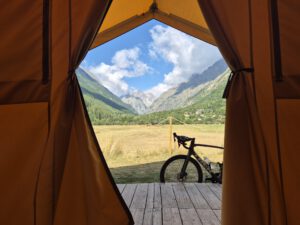 Auvergne, Catalonia, France, French Alps, Midi-Pyrenees, Pyrenees, Spain, Stories
Auvergne, Catalonia, France, French Alps, Midi-Pyrenees, Pyrenees, Spain, Stories Your Tour Summer 2026: the most beautiful Huttopia glampings along the Tour de France route
4 December 2025 | Author: Sander
Will you follow the Tour de France 2026 from one of the Huttopia campsites? The Tour de France is the cycling event of the year. Many cyclists have nothing to do with the race,
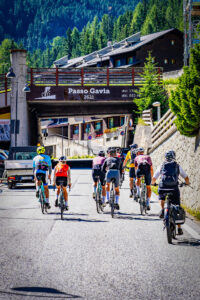 Dolomites, Italy, Lombardy, Stories
Dolomites, Italy, Lombardy, Stories Bormio: the starting point for the Stelvio, Gavia and Mortirolo
2 December 2025 | Author: Dennis Knuist
Hidden behind the screens of our phones, we become increasingly detached from reality. Sometimes we forget what it is really like. Life sometimes seems to take place online

